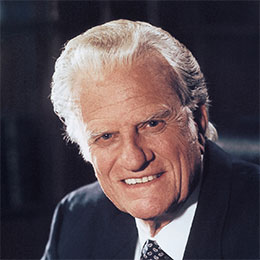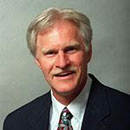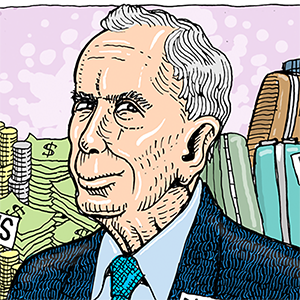The Role of Physical Therapy in Enhancing Quality of Life
Published in Health Articles
Fitness certifications provide professionals with skills to help people improve mobility and strength. Movement plays a key role in maintaining well-being, but pain and stiffness can make daily life difficult.
A structured approach to recovery helps regain control and function. The following sections explore key benefits of movement-based therapy.
Read on!
Improving Mobility and Flexibility
Limited movement affects daily activities. Stretching and targeted exercises restore range of motion. Strengthening weak muscles supports better movement. Increased flexibility reduces the risk of injuries.
Joint stiffness becomes less of a problem. Muscles recover faster with regular movement. Walking, bending, and reaching become easier. A structured routine brings gradual improvement.
The body responds well to gentle conditioning. Simple stretches can make daily activities less painful. Proper movement allows for better function in joints.
Reducing Pain and Discomfort
Chronic pain impacts daily life. Simple tasks become difficult. Specific exercises help reduce discomfort. Strengthening muscles supports weaker areas. Proper techniques lower stress on joints.
Targeted treatment eases stiffness. Physical therapy improves circulation. A gradual approach prevents further strain. The goal is lasting relief. Pain management is important for a better lifestyle. Proper care can lead to long-term comfort.
Supporting Injury Recovery
Healing takes time. Structured rehabilitation speeds up recovery. Strength-building exercises help injured areas. Gentle movement restores function. Scar tissue softens with care. Balanced techniques promote healing.
Regular sessions aid progress. Rest and activity must be balanced. A safe recovery process prevents setbacks. Injuries require patience to heal properly. Small movements can lead to significant progress.
Enhancing Strength and Endurance
Weak muscles cause instability. Strength training builds resilience. Consistent movement boosts stamina. Resistance exercises improve endurance. Proper posture enhances effectiveness. Muscle conditioning prevents fatigue.
Daily activities feel easier. Strength brings confidence. Progress happens step by step. Regular exercise enhances muscle growth. Endurance training keeps the body in better shape.
Improving Posture and Balance
Good posture prevents strain. Balance training reduces falls. Core strength stabilizes the body. Correct alignment prevents injuries. Muscles support proper posture. Awareness improves control.
Small changes make a difference. Proper techniques encourage stability. Daily habits influence posture. Good posture reduces long-term strain. Better balance prevents unnecessary injuries.
Aiding Recovery from Surgery
Surgery affects mobility. Movement speeds up healing. Gentle activity prevents stiffness. Strength-building exercises aid recovery. Gradual progress ensures safety. Pain decreases with controlled motion.
Circulation improves healing. Proper guidance prevents complications. The body needs time to adjust. Proper recovery reduces complications. Simple exercises assist in regaining mobility.
Managing Age-Related Conditions
Aging affects mobility. Joints become stiff. Muscle mass decreases over time. Targeted exercises maintain strength. Movement reduces joint pain. Regular activity preserves function.
Balance training prevents falls. Consistency improves daily life. Mobility exercises support independence. Regular movement keeps the body agile. Joint care improves quality of life.
Enhancing Athletic Performance
Athletes need strong muscles. Targeted training improves endurance. Flexibility prevents injuries. Strength training builds power. Proper movement enhances speed. Recovery techniques prevent strain.
A balanced routine boosts performance. Injury prevention keeps athletes active. A strong body improves efficiency. Regular training increases agility. Strong muscles improve physical output.
Helping Neurological Conditions
Neurological issues affect movement. Gentle exercises aid coordination. Strength training supports muscles. Balance training prevents falls. Daily movement improves control. Small improvements add up.
Proper care maintains function. Consistency leads to progress. Supportive exercises help mobility. Nerve-related conditions require special exercises. Coordination training enhances motor skills.
Reducing Stress and Anxiety
Movement reduces tension. Exercise releases endorphins. Tension fades with activity. Relaxation techniques help recovery. Breathing exercises improve focus. Gentle stretching eases stress.
A balanced routine brings calm. Consistency helps manage emotions. Positive habits support well-being. Stress reduction techniques improve mental health. Physical activity supports emotional stability.
Assisting with Chronic Illnesses
Chronic conditions affect daily life. Movement reduces stiffness. Strength training supports function. Flexibility improves comfort. Proper techniques prevent strain. Consistency leads to progress.
Supportive exercises ease discomfort. Balance training prevents falls. Recovery takes patience. Proper exercise can slow down symptoms. Support from professionals aids in daily management.
Encouraging a More Active Lifestyle
Daily movement promotes health. Simple exercises make a difference. Strength improves mobility. Flexibility reduces discomfort. Activity prevents stiffness. Proper techniques improve function.
Small efforts lead to big changes. Staying active boosts energy. Routine movement supports well-being. Active living increases life expectancy. Regular movement creates better habits.
Boosting Confidence and Independence
Stronger muscles build confidence. Movement encourages independence. Everyday tasks become easier. Pain decreases with activity. Balance training prevents falls. Proper techniques improve posture.
Mobility exercises support self-reliance. Strength brings control. Progress leads to motivation. Independence allows for a better lifestyle. Confidence grows with physical ability.
Preventing Future Health Issues
Regular movement supports longevity. Strength training prevents weakness. Flexibility reduces injury risk. Proper techniques protect joints. Consistency maintains function.
Balance training prevents falls. Good habits prevent stiffness. Movement keeps the body strong. Prevention improves quality of life. Healthy habits reduce medical risks. Proper care leads to long-term wellness.
Enhancing Quality of Sleep
Exercise promotes relaxation. Movement reduces stress. Physical activity aids sleep. Strength training improves rest. Flexibility exercises ease tension. A balanced routine brings calm.
Consistency helps with sleep quality. Reduced discomfort improves rest. Relaxation techniques encourage better sleep. Proper rest improves daily performance. Sleep quality enhances mental function.
Providing Long-Term Health Benefits
Movement supports overall health. Strength training builds endurance. Flexibility enhances function. Proper techniques prevent pain. Balance training improves stability. Routine activity boosts energy.
A structured plan ensures progress. Good habits lead to long-term well-being. A strong body supports a full life. Lifelong fitness ensures longevity. Proper movement maintains strength.
Improving Circulation and Heart Health
Regular movement boosts circulation. Blood flow supports healing. Stronger muscles help the heart. Exercise lowers blood pressure. Good circulation prevents fatigue. Cardiovascular health improves with activity.
Movement reduces heart disease risk. Daily routines keep blood flowing. Simple exercises enhance vascular function. Better circulation promotes energy levels. A healthy heart leads to a stronger body.
Enhancing Mental Focus and Clarity
Exercise sharpens focus. Movement stimulates brain activity. Oxygen flow improves mental clarity. Regular activity boosts memory. Strength training enhances concentration.
Flexibility exercises ease mental tension. Proper posture supports brain function. Balance training improves coordination. A healthy body supports a sharp mind. Movement helps with cognitive function. Improved focus enhances daily productivity.
Discover the Role of Physical Therapy in Enhancing Quality
of Life
A focus on movement improves quality of life. Strength, flexibility, and balance contribute to well-being. Regular exercise supports overall health.
Small changes make a difference. Recovery and injury prevention are important. Movement helps maintain function. Staying active encourages independence.
A structured routine leads to progress. Better health begins with consistent effort.
To read more, you can visit our blog page.























Comments